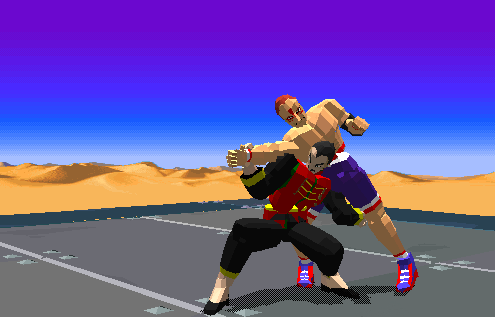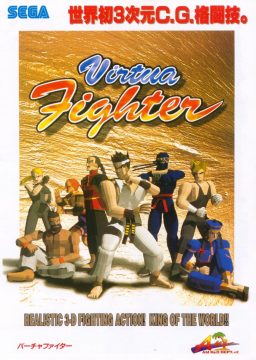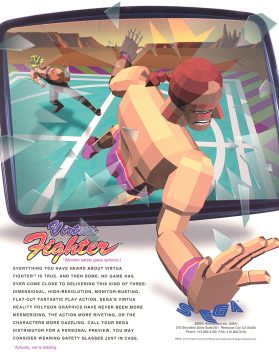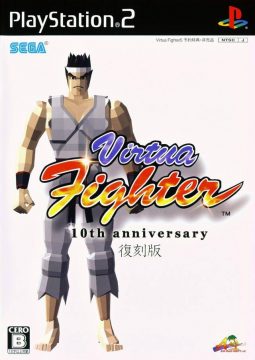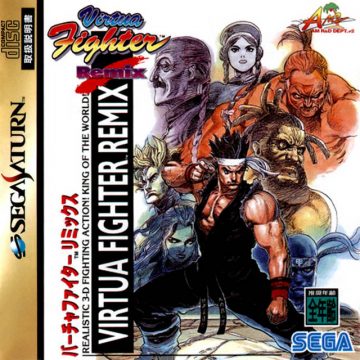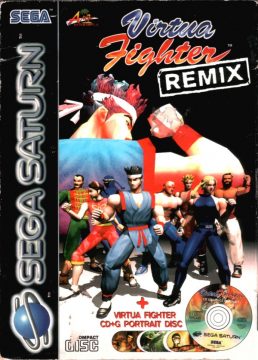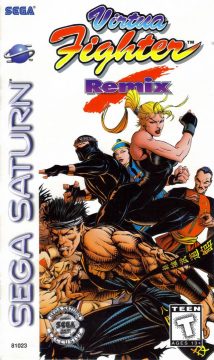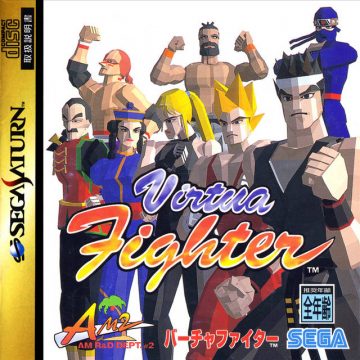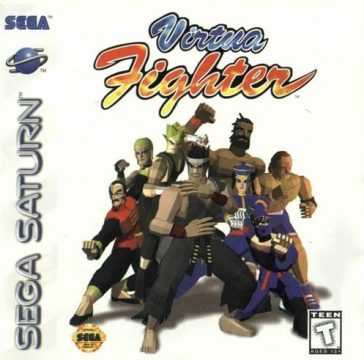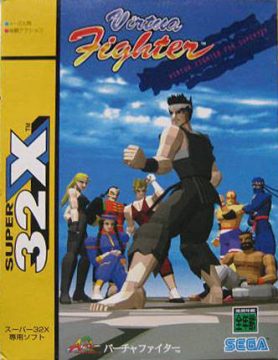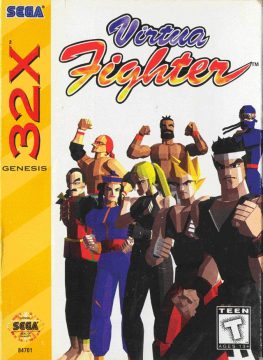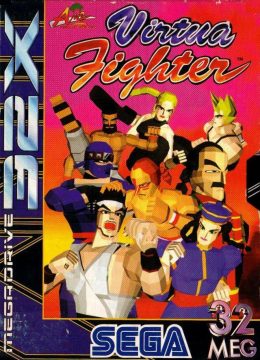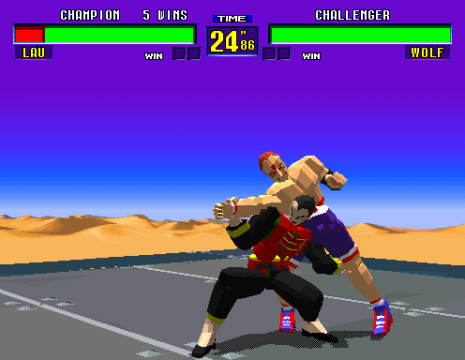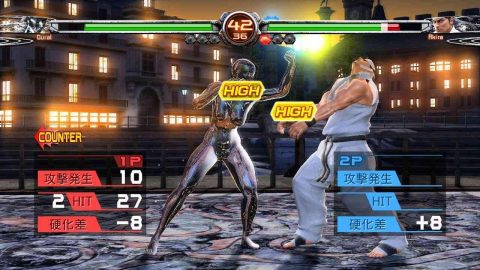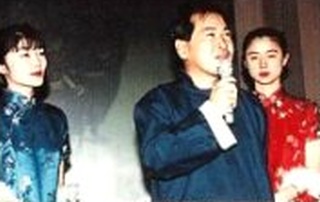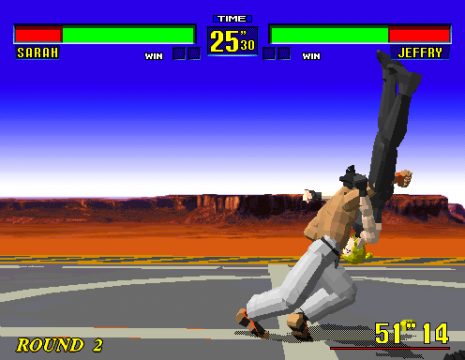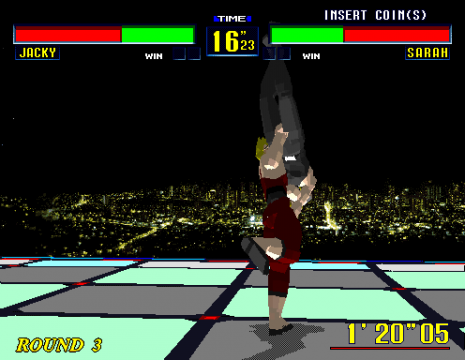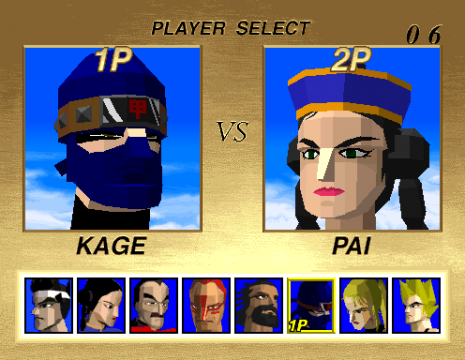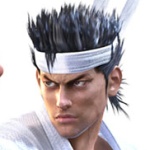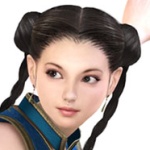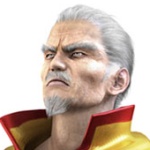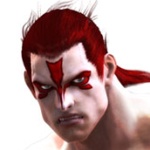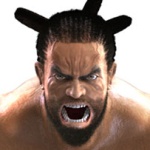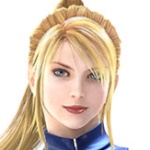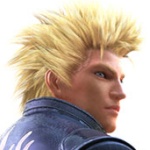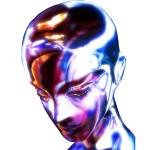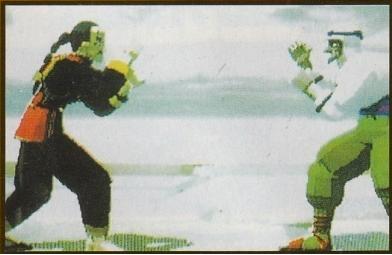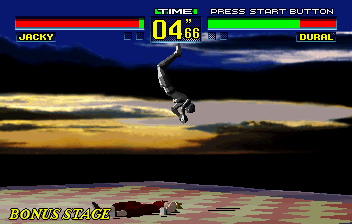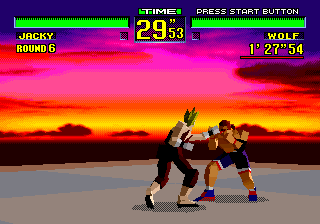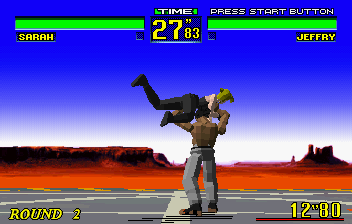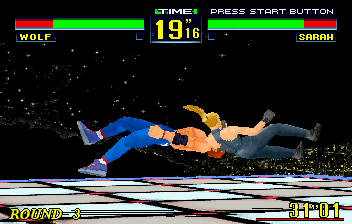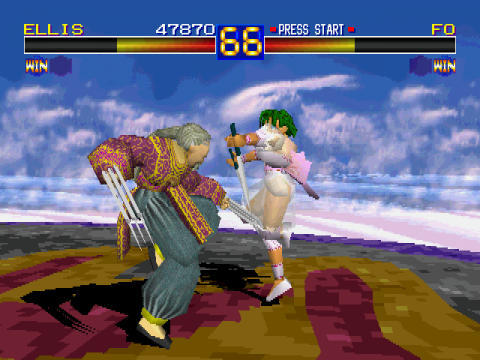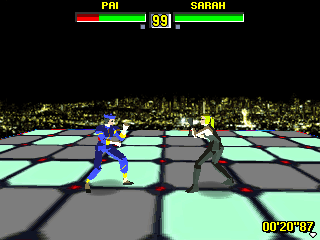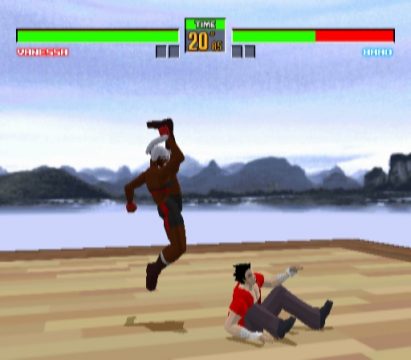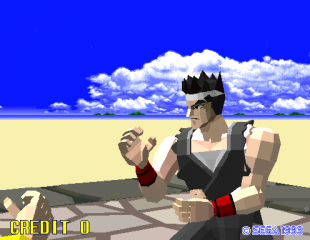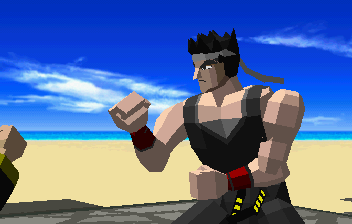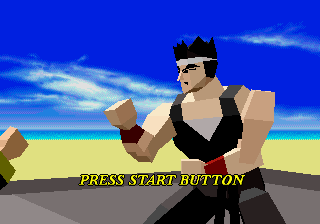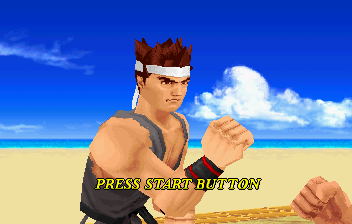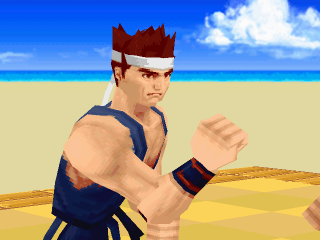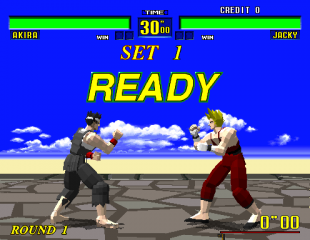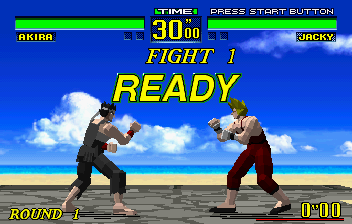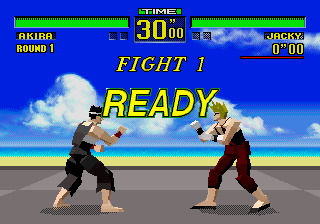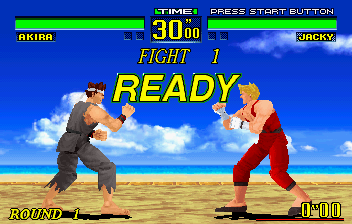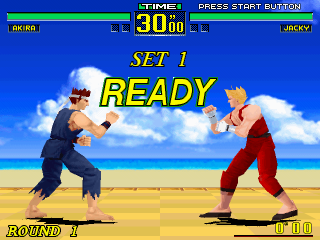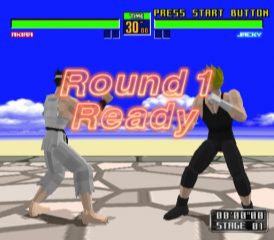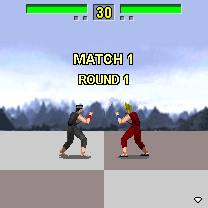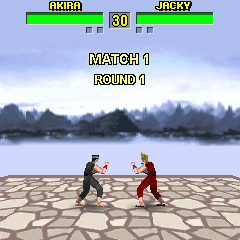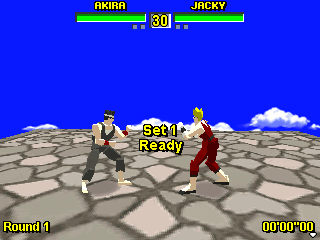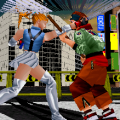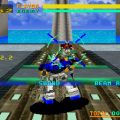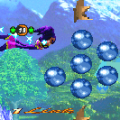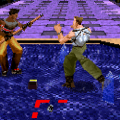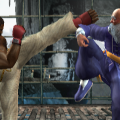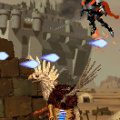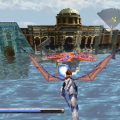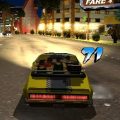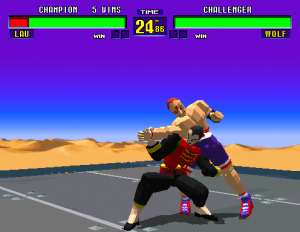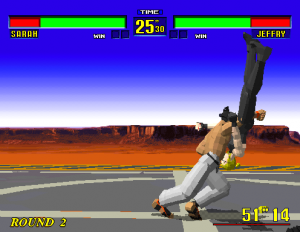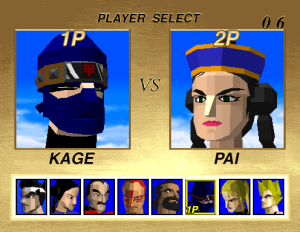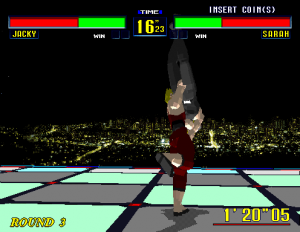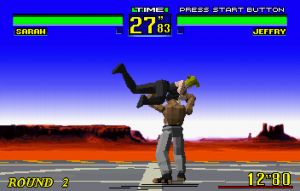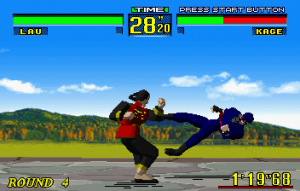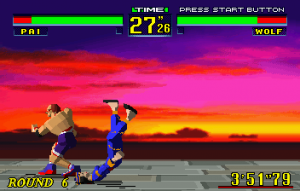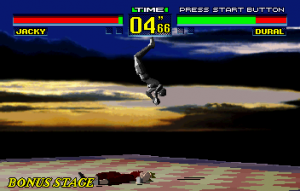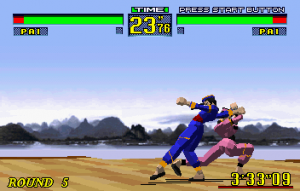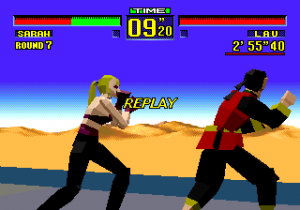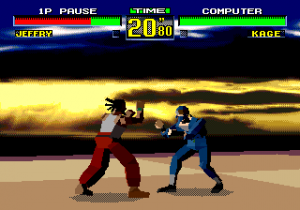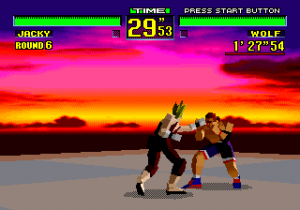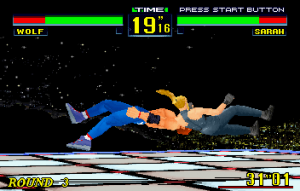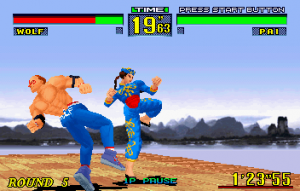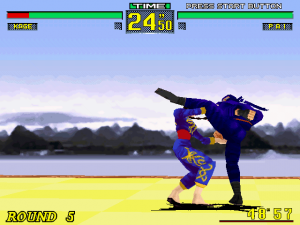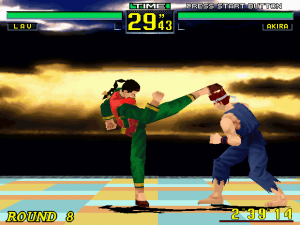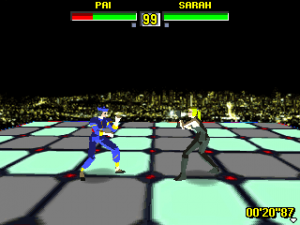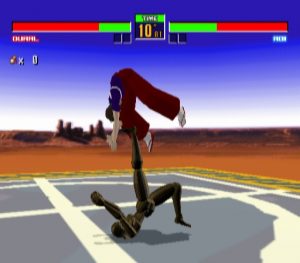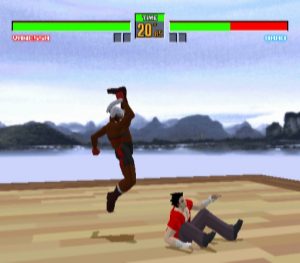After Street Fighter II took the arcades by storm in 1991, the fighting game genre changed forever. Its basic control layout, its illustrious characters and its mix of ordinary attacks and fantastic special moves became an omnipresent template, completely eradicating earlier, more down-to-earth approaches from the Karate Champ school. Countless imitators tried to grab a scrap of the fame and fortunes, flooding the market with many mediocre clones.
But under the leadership of Yu Suzuki, the AM R&D Department #2 at Sega found a way to go one step beyond and leave its own mark on the genre. After the team’s polygon debut with Virtua Racing, Virtua Fighter took fighting games into the 3rd dimension. With fluid animations and a much more realistic take (aside from some very floaty jump physics in the early games, which launched the characters in the air by several meters) that emphasized the representation of actual martial arts disciplines, Suzuki’s masterpiece was almost more of a fighting simulation than a mere game.
Just like Street Fighter II among 2D games, Virtua Fighter positioned itself as the standard formula for 3D fighters that every subsequent genre entry had to relate to in some way. Over the years, the series may have been pushed into a niche by its disciples Tekken and Dead or Alive, but in its early days, Virtua Fighter was a tremendous success for Sega, especially in Japan, and single-handedly saved the Saturn over there. It also was the main factor that fully cemented the status of AM2 as a premier brand name, one that stuck even when the former Sega teams were reformed into second party studios with their own distinctive names in the early 2000s. It also elevated Yu Suzuki ultimately into Japan’s olymp of legendary video game creators (if Hang On,Space Harrier, OutRun and Virtua Racing hadn’t been enough), often referred to as “Sega’s Shigeru Miyamoto.”
Official Japanese Homepages:
Virtua Fighter 4
Virtua Fighter 4 Evolution
Virtua Fighter 4 Final Tuned
Virtua Fighter 5
Virtua Fighter 5 R
Virtua Fighter 5 Final Showdown
Other Links:
2MC Adorable modifications of Dragon Ball Z figurines as Virtua Fighters
Disclaimer: Arcade version screenshots are subject to minor imperfections due to the state of emulation. Virtua Fighter 5 screenshots are promotional material from throughout the web, but representative of the actual graphics.
Even compared to its two-dimensional competition in the early 1990s, Virtua Fighter‘s mechanics all work on very simple foundations. Despite being the nominal originator of the 3D fighting game genre, most of the fighting actually takes place on a single two-dimensional plane, with the only movement around the third axis being a sideways roll after getting knocked down, to avoid a possible follow-up attack on the ground. Only three buttons are used – one for punches, another for kicks and the last for blocking – and everything else is achieved by a combination of them and the joystick controls. Most importantly, punch and block pressed together result in a grapple move. Kick and block lets many characters unleash a powerful roundhouse kick, which is accompanied by a sound effect like a jet plane flying by, and sends the opponent flying in a painful-looking twisting motion – pure cinematic martial arts action.
Learning special moves and combos is important, but it’s even more crucial to fight with expert timing. Other than Street Fighter II and its imitators, attacks don’t simply have fixed priorities over another, but instead the real time simulation demands to take into account the actual physicalities of each frame of every move. The controls feel very stiff and limited compared to modern 3D fighters, which tend to put all their money on combos and fluency, but that doesn’t mean Virtua Fighter is a slow game. To the contrary, a match can be over in few seconds, the standard time limit for a round being 30 seconds, and with some grapple moves capable of consuming more than half of a player’s health bar. A round can even be decided by one single hit, as long as it knocks the opponent out of the ring. Virtua Fighter is not a game where one gets away with many mistakes.
Fighting games are rarely big on storytelling, and Virtua Fighter has possibly the purest gameplay focus of them all. The series’ manuals know of a story about the sinister organization Judgement6, which uses a martial arts tournament as a cover to create the ultimate fighter – now if that doesn’t sound familiar – but you’d never ever have guessed anything about it just by playing the games. There are no cutscenes, no character endings, only the fight and nothing but. If many of Virtua Fighter‘s characters appear bland and stereotypical, it’s because they’re meant to be. One doesn’t really chose so much the characters, but rather the fighting styles they’re associated with. The original game features eight playable characters and one boss.
Akira Yuki
Akira Yuki is the “hero” of Virtua Fighter, mostly by virtue of the fact that Yu Suzuki was getting interested in Hakkyoku-ken (Baijiquan) while developing the game. He was in fact the latest addition to the roster, when the game was already far in development. Contrary to most fighting game “heroes,” he is actually one of the hardest to master, but this is rewarded with some very powerful techniques. He is the canonical winner of the Second World Fighting Tournament.
Pai Chan
The Hong Kong action star Pai is the daughter of Lau Chan, and their relationship is very troubled – at least according to the manual. Her fighting style is Ensei-ken (Xingyiquan). She has many swift maneuvers, and counter attacks figure heavily into her moveset.
Lau Chan
Lau Chan’s technique is described as Koen-ken, or Tiger-Swallow Fist in the game, which is a rather obscure subset of Praying Mantis Fist (Tanglangquan) that was apparently prohibited in the Chinese Empire. He is the only character to visibly age throughout the series: While he originally looked rather young for the 53 years the first game attributes to him, he’s depicted as a withering old man in Virtua Fighter 5. He is the canonical winner of the First World Fighting Tournament.
The Canadian Wolf Hawkfield is the typical pro wrestler that left his former career behind in search of real competition. Together with Jeffry, he is one of the physically strongest fighters in the game. He also makes several appearances in Sega’s All Japan Pro Wrestling series.
Dural is the sole boss character in the entire Virtua Fighter series. She is the laziest kind of fighting game boss; a mostly featureless, metallic cyberspace person in the way people imagined them in the early 1990s courtesy of The Lawnmower Man, her moveset derived from the most effective techniques of all the other fighters. With each session, one only gets one chance to beat her, else the credits start rolling anyway.
From the very beginning, Virtua Fighter always served double duty as a pioneering fighting simulation and as a benchmark for Sega’s current arcade hardware. Up to then, the Lego men of Virtua Racing and the ghastly, nearly abstract figures of Alone in the Dark had been the extend of real-time animated human polygon characters. Tuning the hardware of its former hit Virtua Racing, AM2 managed to create combatants with a level of detail never seen before in a video game. Right from the beginning, the intro boasts with series front man Akira clasping his hands, with every single finger animated separately – a far cry from Alone in the Dark‘s clamshell hands. Today of course the game looks horribly dated, lacking textures and any kind of background details safe for a bland bitmap skyline. When they meant the state of the art, however, the polygon models became so iconic that AM2 keeps bringing them back as unlockable features every once in a while.
Shiba – The Lost Virtua Fighter
When images of Virtua Fighters (originally with the plural) were first shown to the public, it featured an Arab fighter named Shiba in the slot that was only later filled by Akira Yuki. His face even appeared on early cabinet labels for the final game. Apparently he wasn’t very popular among the playtesters, and so Yu Suzuki decided to replace him. He later made a playable appearance as the sword-wielding Siba in Fighter’s Megamix, whose “Game Coordinator” Daichi Katagari has professed to have a soft spot for the lost fighter. Katagiri has since taken over the reins of the series, but he never brought Siba back to Virtua Fighter.
Virtua Fighter was a tremendous success, and if Virtua Racing was an indicator for the direction the video game industry might have been headed to, Virtua Fighter sealed this fate and left no doubt that 3D was becoming the new big thing to dominate the market. The magazine Next Generation (in the November 1995 issue) called it “the most significant game of the 1990s.” Their enthusiastic assessment:
It epitomizes Suzuki’s skill of finding the perfect blend of state-of-the-art technology with solid gameplay (a trick perhaps only learned in the development of games for the cut-throat world of arcades). Virtua Fighter is the biggest game in Japan since Super Mario World. It’s fast. It’s beautiful. And yes, it’s probably art.
Given the popularity of the arcade game, it doesn’t surprise that Sega pushed AM2 to get a port done for the Saturn’s launch in late November 1994. It’s also not surprising that Virtua Fighter was Sega’s big killer app for the system, especially in Japan, where almost every sale of the hardware went along with a sold copy of the game. After the hype, though, players noticed that the conversion wasn’t completely polished, and the 3D produced some graphical glitches. There was also a complete lack of any home-exclusive play modes. Finally, the textureless character models weren’t all that impressive anymore, especially since a significant reduction of the polygon count was necessary – no separately animated fingers here.
Even though the system was positively done for, Sega also put out a late port for the fortuneless 32X. The characters of course turned even blockier, but otherwise it was a great presentation of the hardware’s untapped potential. This version also added a tournament and a ranking mode, which grades the player according to certain performance criteria (the completion time is the only indicator of skill in arcade mode), and offered a bunch of new options like arena size adjustment, several angled camera settings, and a selection of differently colored costumes.
Virtua Fighter almost single-handedly sold the Saturn in Japan, but by the time it reached the West the port’s glitches and outdated graphics allowed the comparatively shallow Battle Arena Toshinden by Tamsoft – which stuck closer to the Street Fighter II formula, but other than Virtua Fighter actually allowed players to avoid attacks by sidestepping – to be built up as Sony’s Saturn killer for 1995. To remedy this situation and to bridge the time needed for perfecting the home port of the sequel, Sega put development team AM1 (the later Wow Entertainment) on the job to tune the original masterpiece for a Remix variant. While essentially the same game, this release brought some tweaks, fixed glitches, and most importantly made all characters fully textured, even though the polygon models still lagged behind the two-year old arcade game in some ways. (Fingers!) It also features one of the oddest loading screen messages ever:
In Europe, Virtua Fighter Remix came with a bonus disc that contained some CG artwork of the characters, samples from the popular CG disc series Sega sold at retail in Japan. Americans were even better served: Sega offered a free copy of the update for everyone who filled out the registration card that came with each Saturn unit, in a way to “replace” the old version as the pack-in bundle.
The one issue the remake didn’t fix was the lack of extra modes. Soon after, though, Sega released the game at the forefront of their program for Windows PCs, which adds Ranking, Team Battle and Watch modes.
While the sequel has seen a number of reissues on following hardware generations, Virtua Fighter has only been made available for new audiences in wireless mobile form – in several 2D and even 3D versions for a wide range of phones, programmed by Southend Interactive – which are surprisingly faithful ports, if one may look past the naturally horrible controls for a moment.
To celebrate the series’ 10th anniversary alongside the release of Virtua Fighter 4 Evolution, Sega included a kind of demake on the disc. In this special mode all characters from Evolution appear in low-polygon versions of themselves, in front of the old flat backgrounds. The fighters retain their expanded move sets, with the exception of those that require stepping into the third dimension, as the 10th Anniversary edition follows the rules of the original. So there’s no sidestepping, no stage borders, but lots of floaty jumps. It’s fun to see the new fighters in this low-definition way, but considering how dated not only the visuals, but even more so the mechanics seemed in 2003, this mode amounted to little more than a gag, tucked away deep in Evolution‘s options menu. Only in Japan it was also sold as a standalone release, and contained as part of a special anniversary book & DVD package by Enterbrain, called Memory of Decade.
Comparison Screenshots
